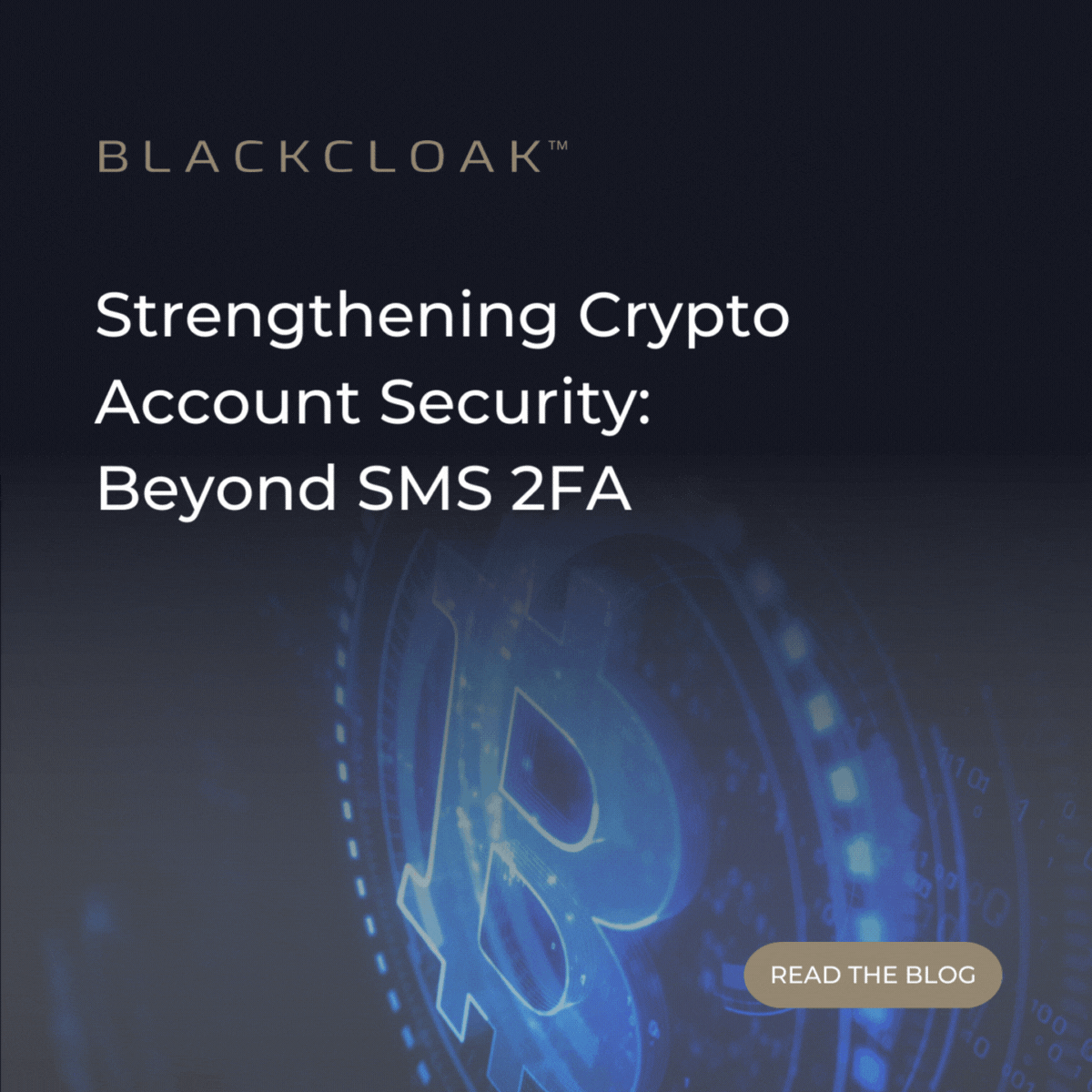Strengthening Crypto Account Security: Beyond SMS 2FA

As Bitcoin Week kicks off in Miami today, we are reminded the rise of cryptocurrencies is revolutionizing the financial landscape and providing individuals with unprecedented control over their digital assets. However, this new paradigm also comes with inherent risks, as cybercriminals constantly devise sophisticated methods to exploit vulnerabilities and gain unauthorized access to crypto accounts.
The SMS 2FA Conundrum
SMS 2FA has been a popular choice for securing online accounts, including crypto wallets, due to its relative ease of implementation and widespread support. It typically involves receiving a one-time verification code via SMS, which users must enter along with their login credentials. Recent cyber attacks have demonstrated that SMS-based authentication is not foolproof. Techniques such as SIM swapping, mobile number porting and phishing have exposed the vulnerabilities of relying solely on SMS 2FA, making it essential for cryptocurrency holders to explore more robust alternatives.
While traditional two-factor authentication (2FA) via SMS has long been employed as an additional layer of security, recent incidents have revealed its limitations. Crypto enthusiasts must address these concerns and explore alternative methods of securing their accounts. In the realm of non-SMS 2FA here are some effective strategies to safeguard your crypto holdings.
Hardware Security Keys:
Hardware security keys are physical devices that generate unique cryptographic codes and act as a second factor for authentication. They offer superior protection against phishing attacks and are immune to SIM swapping. Popular hardware security key options include YubiKey and Google Titan. Users can authenticate their crypto accounts securely by plugging the device into a USB port or utilizing wireless connectivity.
Authenticator Apps:
Authenticator apps, such as Google Authenticator or Authy, provide an additional layer of security by generating time-based one-time passwords (TOTPs). These codes are time-limited and change regularly, rendering them useless if intercepted. Authenticator apps are typically installed on a mobile device and can be used to authenticate multiple accounts simultaneously.
Biometric Authentication:
Leveraging biometric authentication methods, such as fingerprint or facial recognition, can significantly enhance the security of crypto accounts. Biometric data is unique to each individual, making it difficult for attackers to replicate. Many crypto wallets and exchanges now offer biometric authentication as an option, providing a convenient and secure way to access digital assets.
Hardware Wallets:
Hardware wallets are physical devices designed explicitly for storing cryptocurrencies. These wallets offer an offline storage solution, keeping the private keys secure from online threats. Hardware wallets, such as Ledger or Trezor, require physical confirmation to initiate transactions, minimizing the risk of unauthorized access.
Multi-Signature Wallets:
Multi-signature wallets, also known as multisig wallets, require multiple signatures or approvals before a transaction can be executed. This feature provides an extra layer of security, as it requires collaboration among multiple trusted parties to authorize transfers. It is especially useful for businesses or individuals managing substantial crypto assets.
Mobile Carrier Account:
As some applications/tools require the user to have a phone number, it is important to make sure that the mobile carrier for that phone is secure. While BlackCloak does recommend not using a SMS or phone, if the other options provided by the application or tool are too complex, follow these steps to ensure that your mobile carrier is secure to prevent SIM swap or number porting: Create a strong password; implement 2FA; and require a PIN or in-person/call-based passphrase to make account changes.
As the popularity of cryptocurrencies continues to grow, so does the importance of securing digital assets against cyber threats. While SMS-based 2FA has been widely adopted, recent incidents have highlighted its limitations. To ensure the safety of your crypto accounts, it is crucial to explore non-SMS 2FA solutions.
Hardware security keys, authenticator apps, biometric authentication, hardware wallets, and multi-signature wallets offer robust alternatives to bolster account security. By implementing these advanced measures, you can fortify your crypto holdings and mitigate the risk of unauthorized access, providing peace of mind in an increasingly digital world. Remember, securing your crypto assets is not just a choice; it’s a necessity in today’s evolving threat landscape.
To learn more about Digital Executive Protection, click here.








